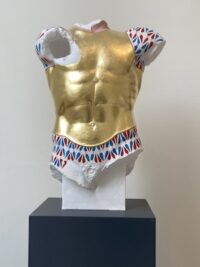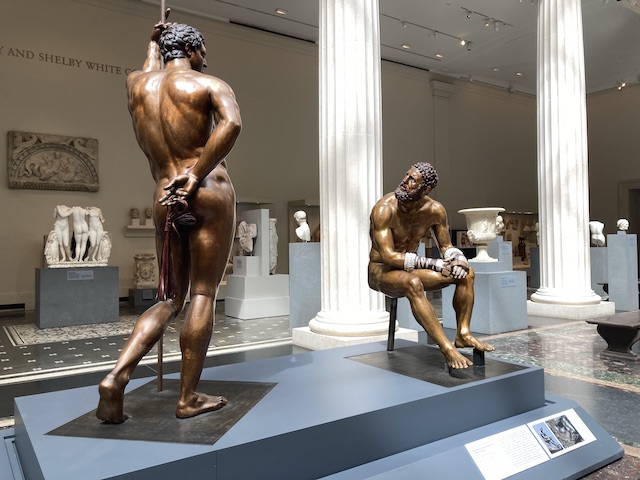I recently attended a symposium at the Metropolitan Museum of Art focusing on the Met’s stunning exhibit “Chroma: Ancient Sculpture in Color.” The speakers and their presentations were captivating, and then to see the works up close brought the experiencing to a gratifying conclusion.
 The exhibit featured reconstructions of ancient sculptures painted in vibrant colors as they were created 2,000-plus years ago. Although sculptures created during the Renaissance were as monochromatic when they were created as they are today, that often isn’t the case with ancient sculptures.
The exhibit featured reconstructions of ancient sculptures painted in vibrant colors as they were created 2,000-plus years ago. Although sculptures created during the Renaissance were as monochromatic when they were created as they are today, that often isn’t the case with ancient sculptures.
According exhibit literature, “Greek and Roman sculpture was originally richly embellished with colorful painting, gilding, silvering and inlay. Such polychromy, which was integral to the meaning and immediacy of such works, survives today only in fragmentary condition.”
 Through modern technology, scientists can collect traces of the actual color from ancient sculptures and use that in reconstructions. The results are often stunning. Not only were there reconstructions of marble sculptures in the MET exhibit but also bronzes. The exhibit revealed how scientists believe the bronzes appeared in antiquity. The details in their eyes and expressions struck me the most. The warriors come to life when presented with those details.
Through modern technology, scientists can collect traces of the actual color from ancient sculptures and use that in reconstructions. The results are often stunning. Not only were there reconstructions of marble sculptures in the MET exhibit but also bronzes. The exhibit revealed how scientists believe the bronzes appeared in antiquity. The details in their eyes and expressions struck me the most. The warriors come to life when presented with those details.
If you’re interested in learning about the vivid colors that graced the majestic Greek and Roman sculptures in their day, there are countless videos and documentaries on the subject of polychromy in ancient art. Below are a few that will get you started.
Smart History: In Full Color, Ancient Sculpture Reimagined
Oxford Academic: Polychromy in Greek and Roman Sculpture
Cecilie Brøns: The Polychromy of Greek and Roman Sculpture and Architecture
CBS Sunday Morning: Ancient sculptures reveal their true colors
For more about the Met exhibit, click here.
To browse through the MET’s online collection of Greek and Roman artifacts, click here.
 Fra Noi Embrace Your Inner Italian
Fra Noi Embrace Your Inner Italian







